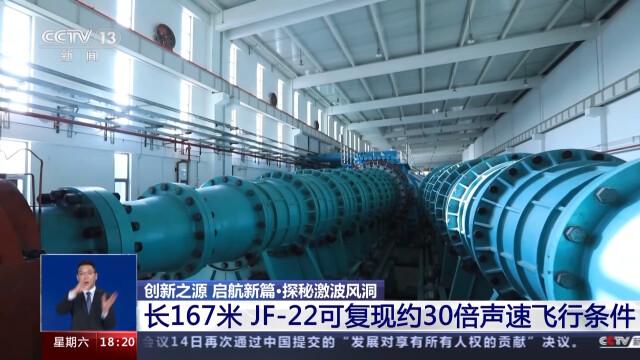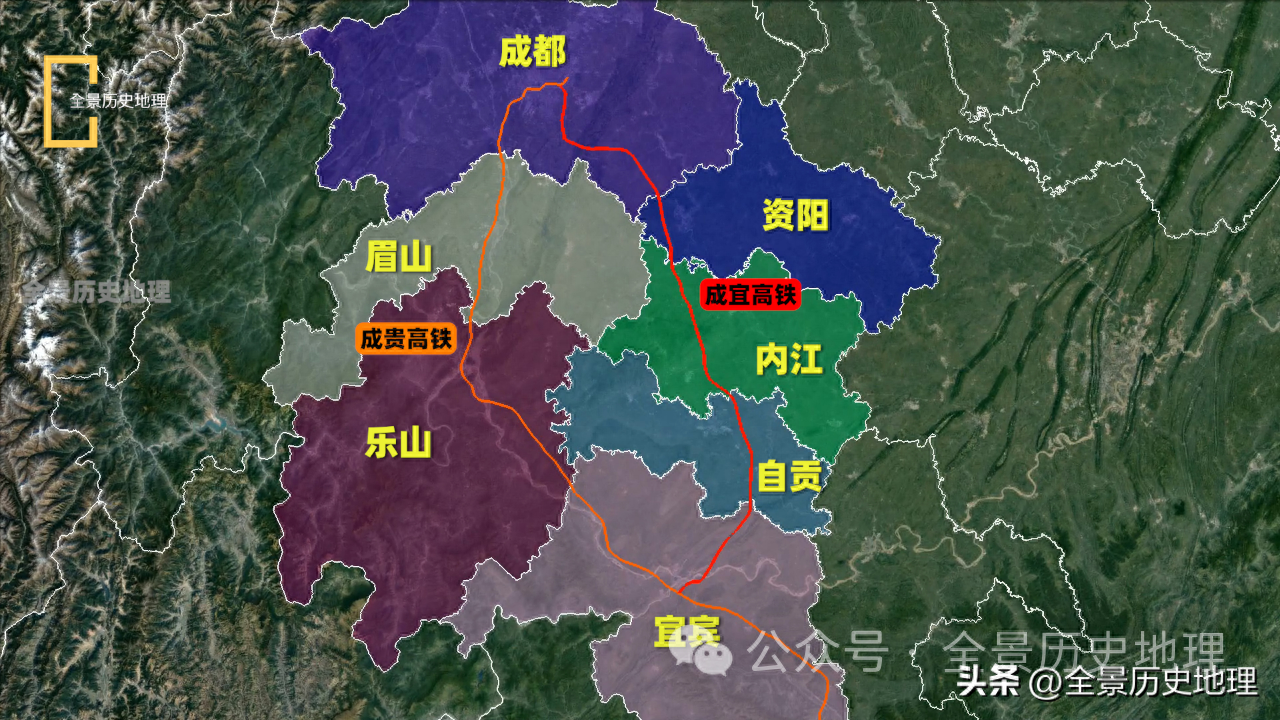Cradle of the New Generation Aircraft! JF-22 Ultra High Speed Wind Tunnel has passed acceptance and can reproduce flight conditions at 30 times sound speed
In the development process of various types of aircraft, a large number of simulation flight experiments are required, but it is impossible to actually frequently test fly the aircraft in the sky. Therefore, wind tunnels have emerged, which is equivalent to artificially building a "flying sky" on the ground and is an essential large-scale aerodynamic experimental device for developing aircraft
In the development process of various types of aircraft, a large number of simulation flight experiments are required, but it is impossible to actually frequently test fly the aircraft in the sky. Therefore, wind tunnels have emerged, which is equivalent to artificially building a "flying sky" on the ground and is an essential large-scale aerodynamic experimental device for developing aircraft. Recently, at the Huairou Science City in Beijing, the JF-22 Ultra High Speed Wind Tunnel, a national treasure, has just passed acceptance.
The 167 meter long JF-22 can reproduce flight conditions at approximately 30 times the sound speed
CCTV reporter Shuai Junquan: This is the National Key Laboratory of High Temperature Aerodynamics for Aerospace Flight. Next to me is the JF-22 Ultra High Speed Shock Wind Tunnel, which has just passed the acceptance test. Its total length reaches 167 meters, and its performance indicators can be said to be internationally leading. It also provides strong support for the development of our country's aerospace shuttle system and ultra-high speed aircraft.

As the cradle for the development of a new generation of aircraft, the JF-22 Ultra High Speed Wind Tunnel can replicate flight conditions at altitudes of 40 to 90 kilometers, speeds up to 10 kilometers per second, and speeds equivalent to approximately 30 times the speed of sound.

Jiang Zonglin, researcher of the Institute of Mechanics of the Chinese Academy of Sciences and project leader of Huairou Shock Wind Tunnel: The first one is large. Our wind tunnel blows out a flow field with a diameter of 2.5 meters. Generally, the maximum diameter in foreign countries is 1.5 meters, so you can accommodate larger aircraft. The second time is long. At Mach 10, we reached 40 milliseconds, which is about several times and several times higher than the advanced level of our domestic and international counterparts. The accuracy of the experimental results is also high. The third one has high total temperature, high total pressure, and high performance. We can now achieve temperatures ranging from 2500 degrees Celsius to 18000 degrees Celsius, and with a total pressure of 100 atmospheres, we can achieve temperatures ranging from 10000 atmospheres. So there is no other wind tunnel in the world that can compare this performance.
CCTV Reporter Visits the Interior of JF-22 Ultra High Speed Wind Tunnel
The research and development goal of the JF-22 ultra high speed wind tunnel is mainly to solve the experimental research problems of ultra high speed flight technology. After the project acceptance, the scientific research team first launched research on the technology of sky and earth round-trip flight. What does the JF-22 Ultra High Speed Wind Tunnel look like inside? How to carry out experimental work inside?

CCTV reporter Shuai Junquan: Using the gap stage of the experiment, now we need to enter the interior of the JF-22 ultra high speed wind tunnel to take a look. This is its experimental chamber, which is relatively spacious. Its diameter reaches 4 meters, and the maximum size of the experimental model that can be used for experiments can reach a length of 8 meters, while the maximum speed of the airflow can reach 3 to 10 kilometers per second, Thus, a series of aerodynamic hypervelocity experiments can be carried out.

Han Guilai, a researcher at the Institute of Mechanics of the Chinese Academy of Sciences and the site director of Huairou Shock Wind Tunnel, said, "Recently we are going to study such an aircraft with two-stage or multi-stage orbit entry. The rocket is a VTOL. In the future, we will take off and land horizontally through the aircraft, fly to an altitude of, say, 30 to 40 kilometers, release the second stage, and then fly upward to form a relay mode called two-stage or multi-stage orbit entry.", So recently we are also preparing an experiment with a corresponding separation scheme, mainly to explore the process of separating the lower level from the upper level.

Jiang Zonglin: In terms of wind tunnel research, we have already solved the concept of high ultrasonic separation. From an experimental perspective, we have successfully and safely solved this problem. In addition, we also need to perform a separation under different flight speeds, which can be done in any situation. After these situations are completed, obtaining this data will make aircraft design and flight experiments very easy.
How does a wind tunnel work? What are the characteristics of shock wave wind tunnels?
JF-12 and JF-22 cover all "flight corridor" experimental capabilities
The JF-12 replica wind tunnel, successfully developed in 2012, has a total length of 265 meters, making it the largest and most advanced shock wave wind tunnel in the world at that time. The JF-22 ultra high speed wind tunnel, which has recently completed acceptance and started official operation. The JF-12 Reproduction Wind Tunnel and the JF-22 Ultra High Speed Wind Tunnel are respectively the largest and most advanced shock wave wind tunnels in their respective fields, making China the only country in the hypersonic field with the ability to cover all "flight corridors" experiments. What major research and development projects will this important platform undertake in the future?

The JF-12 replication wind tunnel and the JF-22 ultra high speed wind tunnel can achieve experimental conditions of 1.5-3km/s and 3-10km/s respectively, jointly forming an aerodynamic experimental platform covering Mach numbers of 5-25 and flight altitudes of 25-90km.

Jiang Zonglin: With a Mach number of 10, such as over 100 atmospheres and an experimental time of 40 milliseconds, we can conduct hypersonic engine tests. Our laboratory proposes a new type of engine called a stationary oblique detonation engine. Now we have achieved Mach 7 to Mach 9 using JF-12, and it seems that our new engine has a higher thermal efficiency by 50% compared to traditional engines, with stable combustion. JF-22 is ready to go from Mach 9 to Mach 16. If such an engine is completed, I think it will be a great boost to our country's next aviation and Space technology technology.

In addition, the scientific research team will also use this shock wave wind tunnel experimental platform to conduct research on glider aircraft, space shuttle vehicles, multi-stage orbit entry vehicles, and other vehicles, supporting and serving major needs and key technological breakthroughs in the field of hypersonic technology in the country.
Jiang Zonglin: At the Mach number 20 level, we can make high-altitude gliders, which can be said to arrive globally in an hour. If we achieve Mach number 30, we actually use such a Mach number for aircraft atmospheric reentry, such as Mars exploration, orbital vehicle reentry and reentry. So this wind tunnel covers the entire range from aerospace to aviation to detectors, so it has great application fields.
(Reporter from CCTV, Shuai Junquan, Chu Erjia, Wang Shuai)
Disclaimer: The content of this article is sourced from the internet. The copyright of the text, images, and other materials belongs to the original author. The platform reprints the materials for the purpose of conveying more information. The content of the article is for reference and learning only, and should not be used for commercial purposes. If it infringes on your legitimate rights and interests, please contact us promptly and we will handle it as soon as possible! We respect copyright and are committed to protecting it. Thank you for sharing.(Email:[email protected])



















